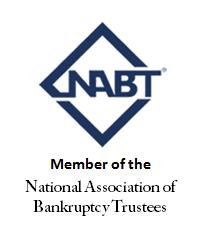|
Office
of |
|
|
||
|
August 2006 - by John A. Palumbo
In these cases, the debtor owns the property only during his or her lifetime. When the debtor dies, the property is
transferred to his or her children or grandchildren. While this type of asset is not readily liquidated, it is
marketable, if you have the patience and a good private investor in your hip pocket.
This is one of the more tricky assets to turn into cash. With no collateral, there’s no safety net if the person
who owes this money to the debtor fails to pay it back. However, it shouldn’t be ignored because while restitution
payments can be paid out for years, they can increase the bankruptcy estate in the long run if handled properly.
Rather than holding the estate open for all those years, you should sell the income stream quickly even though it
probably won’t net a lot, but that’s okay. Remember, it’s secured by a “criminal,” so any value is better than the
promise to pay!
Here’s another odd asset because it usually occurs when the ex-spouse owes the debtor money based on a trigger date
in the future, for example when a child turns 18 years old, a spouse remarries, or when the property is sold at a
certain date. This asset requires you to look a little harder to find the right investor to buy it because your
local real estate agent won’t move it for you, that’s for sure.
This type of asset usually refers to a real estate property and the debtor owns a part of it, like one-third or
one-half, for example. It can be a little more difficult asset to sell, but it can be sold. The debtor or family
members are the most likely buyer candidates; however they often bluff the trustee into abandoning the asset. Don’t
be full. The more solid potential buyers are high-risk investors and, although the group is small in number, they
can help you increase the bankruptcy estate in a big way.
This type of transfer is not utilized in all states, and because it depends on one party outliving the other, it’s
more of a gamble when it comes to getting value from it. Again, by looking to the private, high-risk investor, you
can realize a value from this otherwise abandoned asset.
This would be considered the opposite of a life estate as the property will be lived in by a relative or other
person and only goes to the debtor once the life tenant dies. By knowing the age and health of the life tenant, you
can make a better determination of the asset’s value, but it’s difficult to get this type of information. Your best
bet is to involve a private investor who has more tenacity and deeper pockets than most so you can “pocket” some
value for the estate.
This seems to be a prerequisite asset to own when filing for bankruptcy. While small, there is still a market
available to help you liquidate this asset. To learn more about time shares and bankruptcy, read my free report,
“How to Triumph over Time Shares” by logging on to www.Chapter7assets.com/timeshares. It will give you tips on how
to find value in these risky investments.
The value of these assets are not easily determined, however, in 50% of cases, there is something to sell, such as
the cash value of the policy, so it’s worth it to investigate before abandoning this asset. Some investors find the
best course to take is to take over the policy and premium payments and the long-term risk that goes with it.
Taking the investor up on his offer can help you accomplish your goal of settling your bankruptcy estate.
While it may seem a no-brainer to abandon this asset, in today’s real estate market with double-digit appreciation
growth year after year, don’t be too hasty to throw it aside. Many sophisticated investors can turn this seemingly
hopeless situation into a small asset distribution for the estate by knowing how to negotiate with the lenders and
mitigate loans.
This asset is perhaps the most mysterious of all since you can’t always get its true value, but don’t let it escape
your radar screen. Look into the books, its assets, and expenses. While, on the surface, it may not appear to be a
truly viable business, often it only takes the interest of one bidder for a bidding war to erupt. And that’s the
kind of war the estate can only benefit from.
John Palumbo is the principal of Bankruptcy Asset Management, based in Jacksonville, FL, and one of the nation’s leading authorities on the evaluation and liquidation of unusual assets in bankruptcy. His uncanny ability to recognize value in items oftentimes deemed unworthy has transformed his asset analysis into an extraordinary art form. To speak with John personally, contact him at 904-641-2043 or PalumboJ@aol.com. | ||
|
Copyright 2015. John A.
Palumbo. All Rights Reserved.


